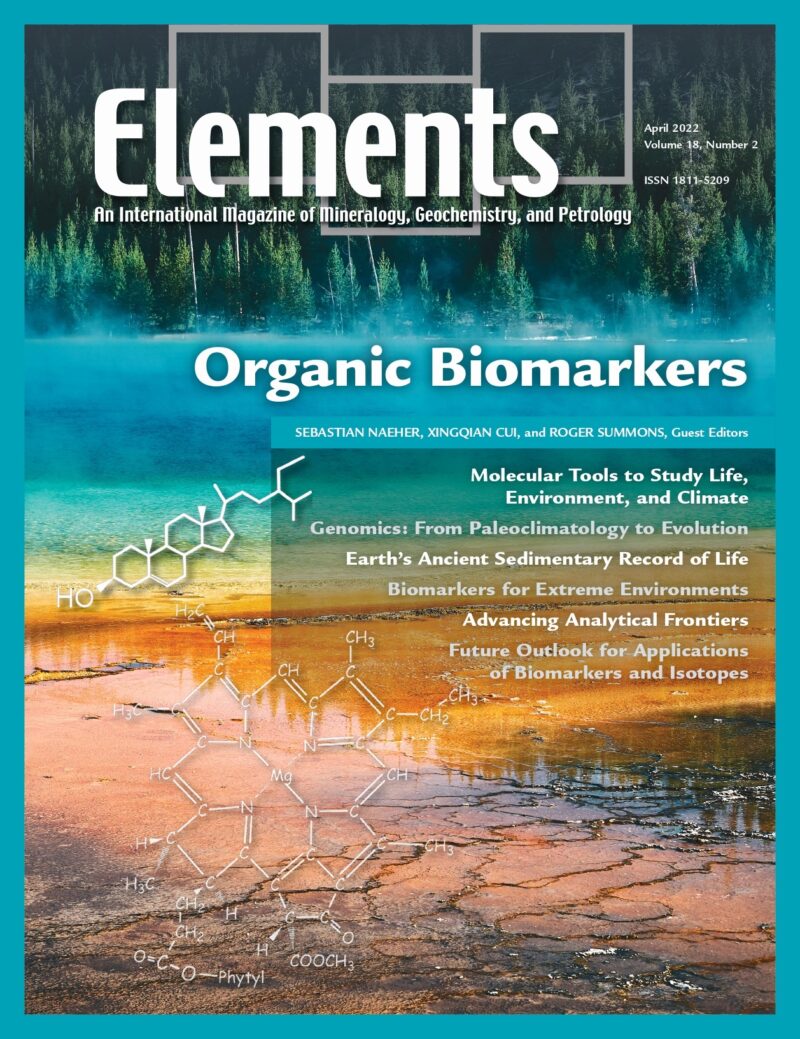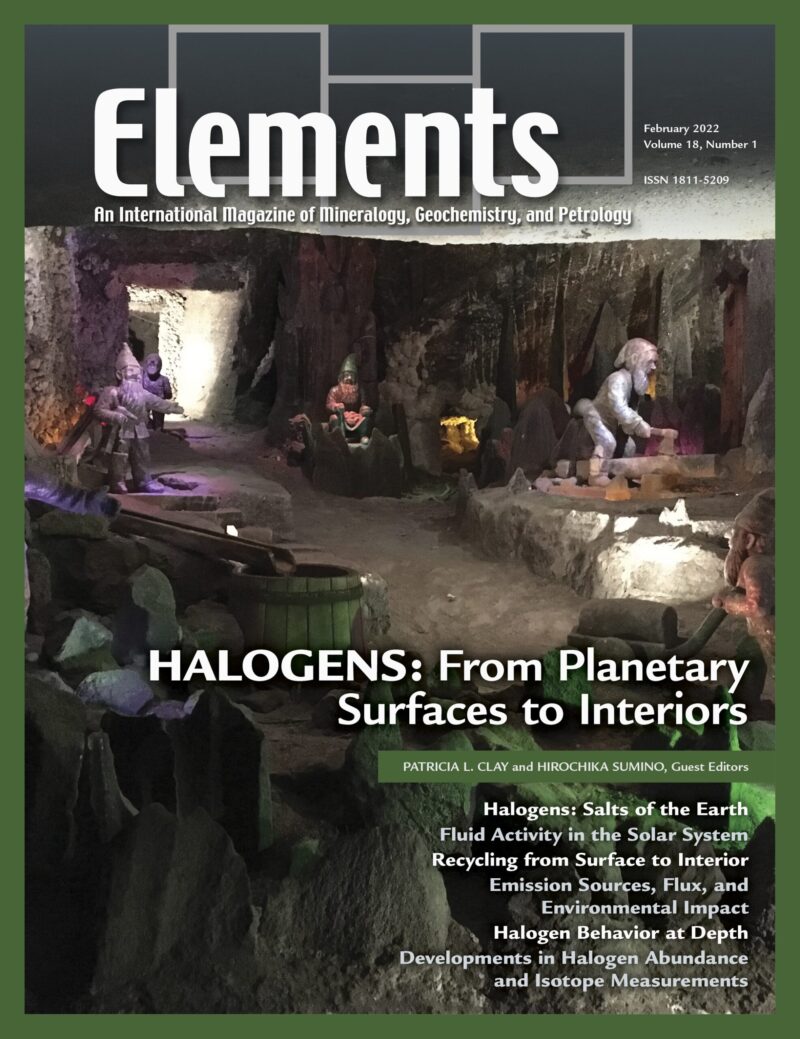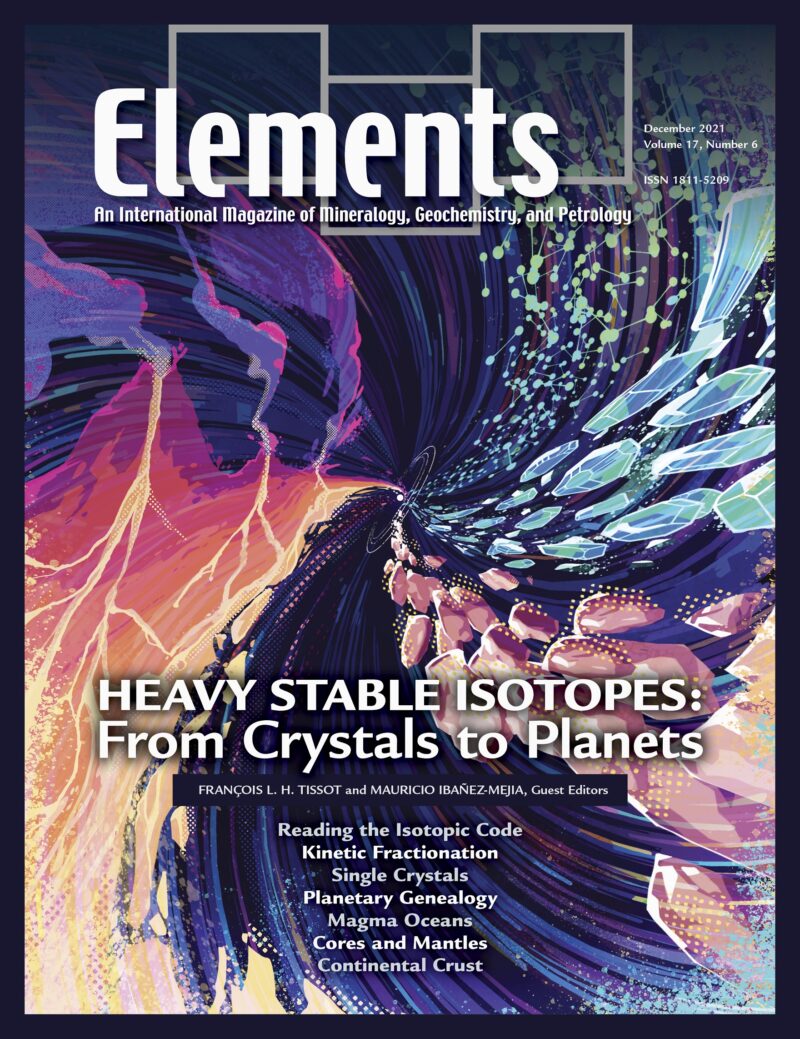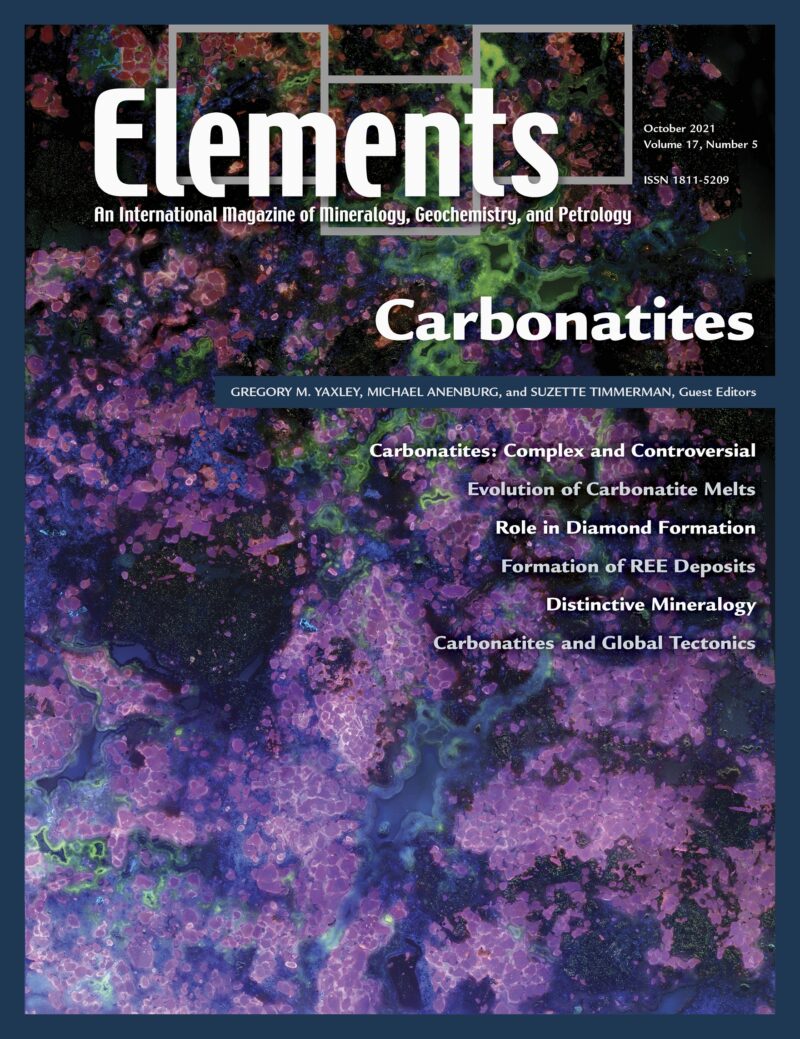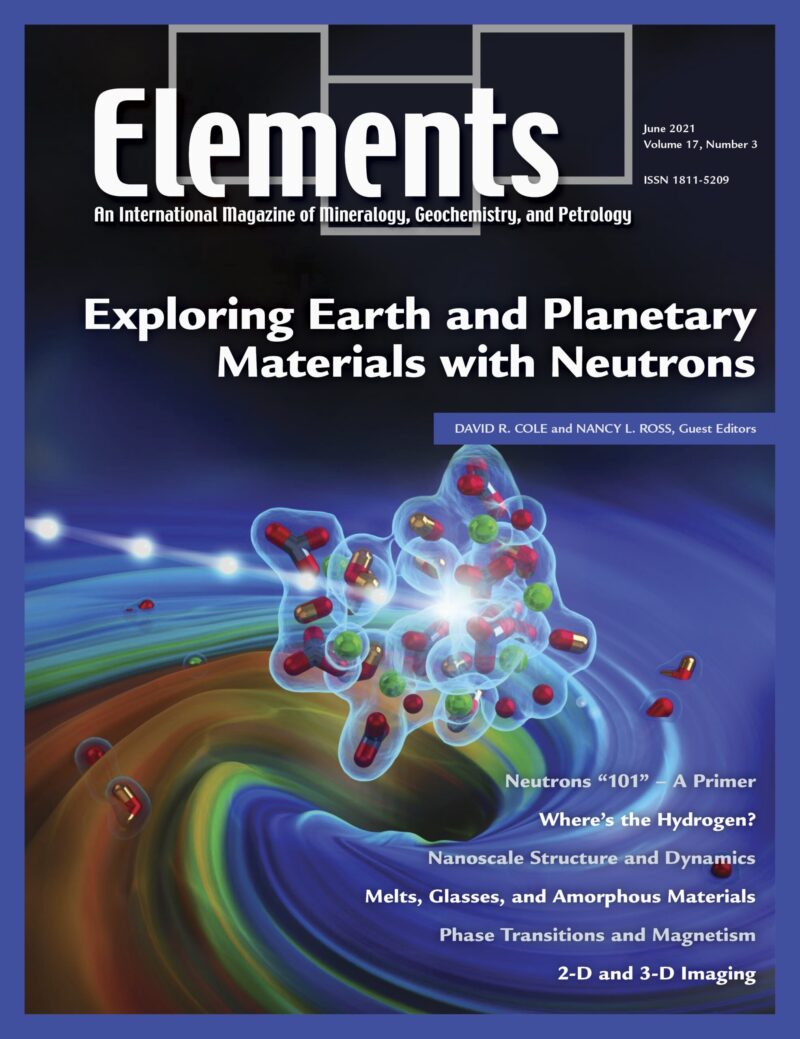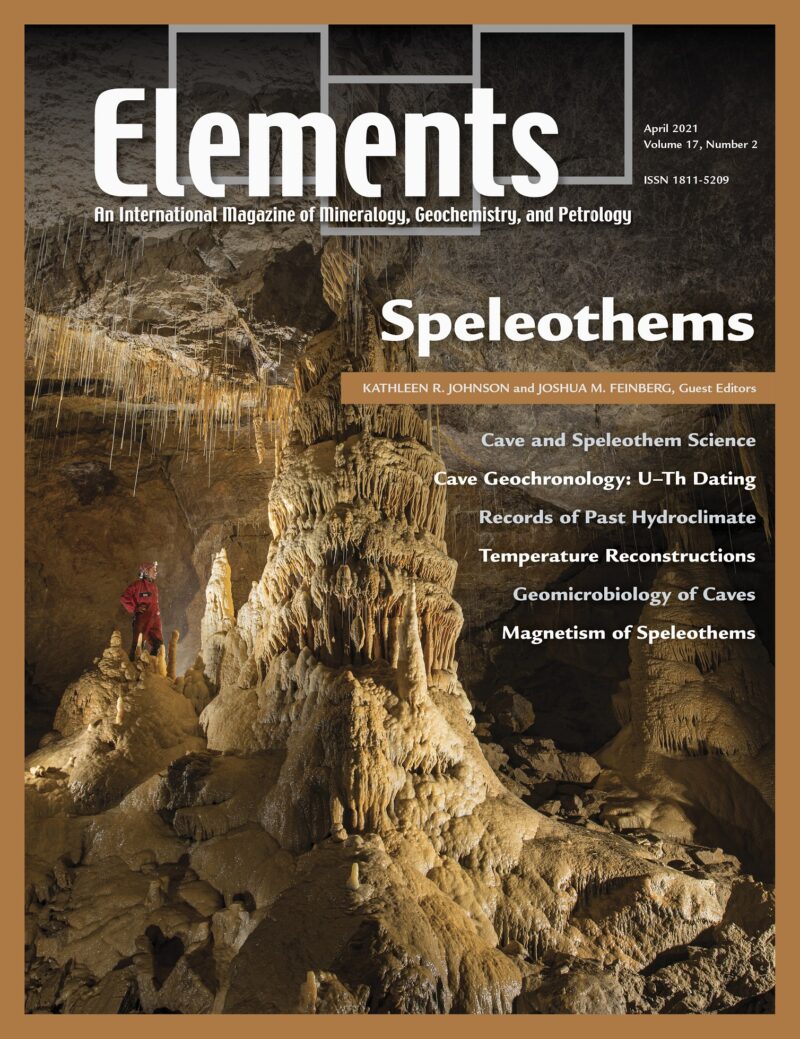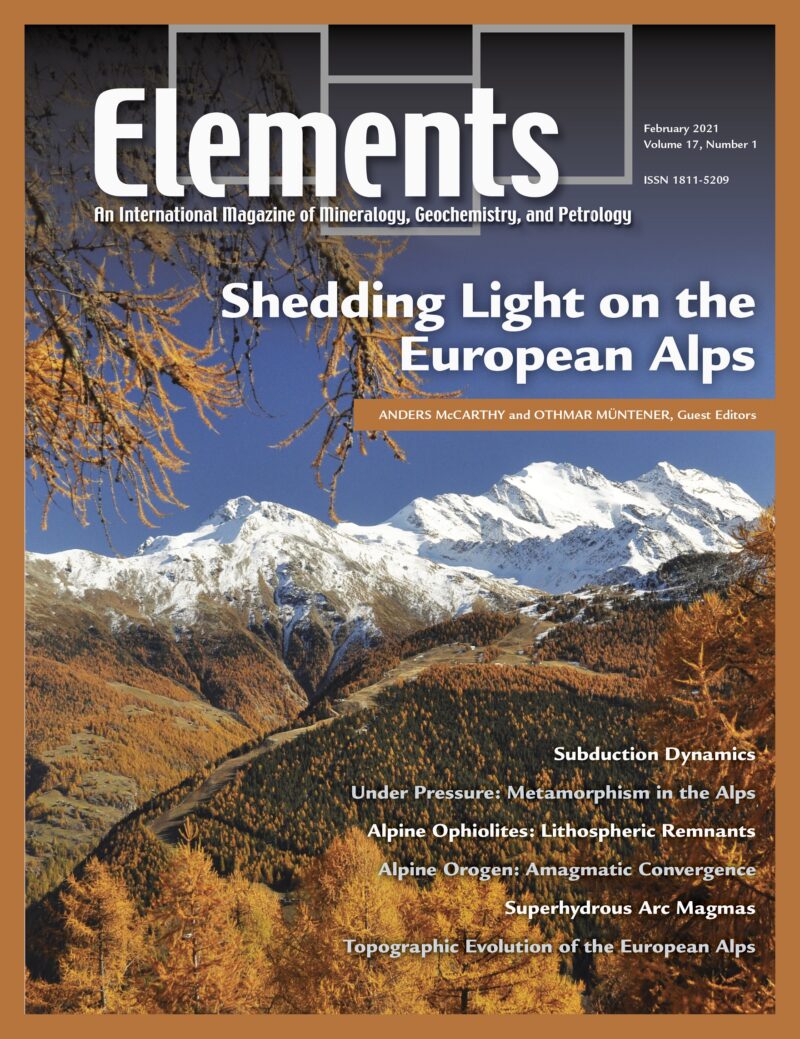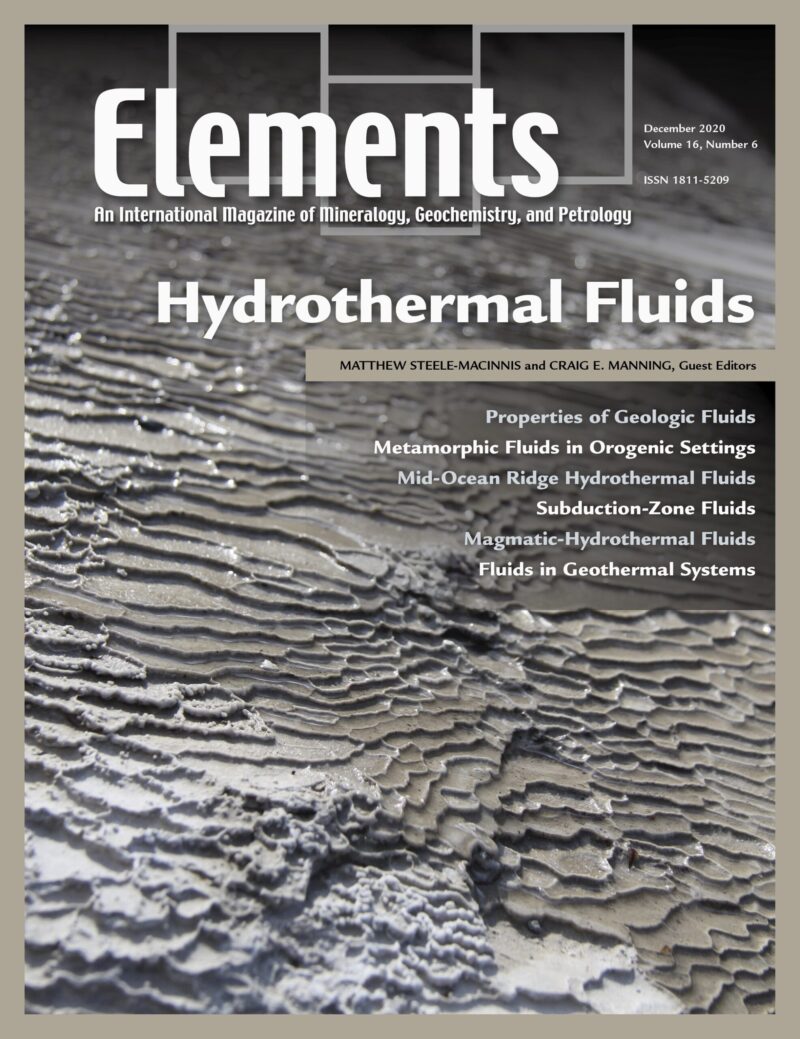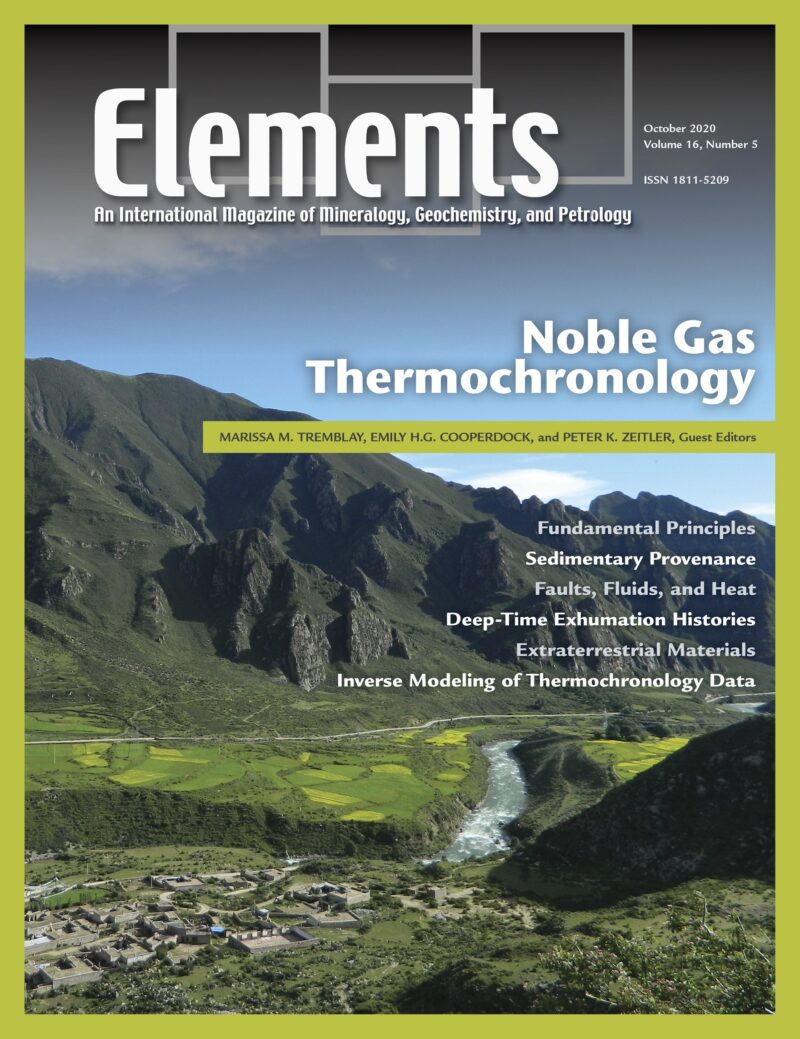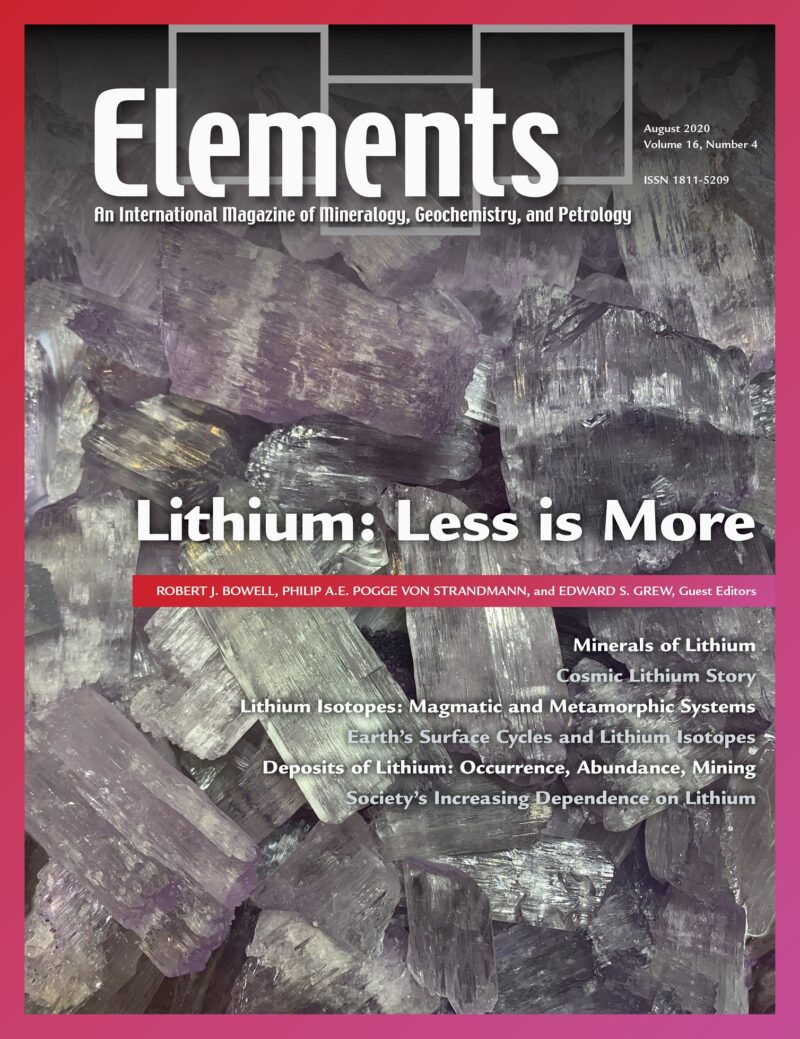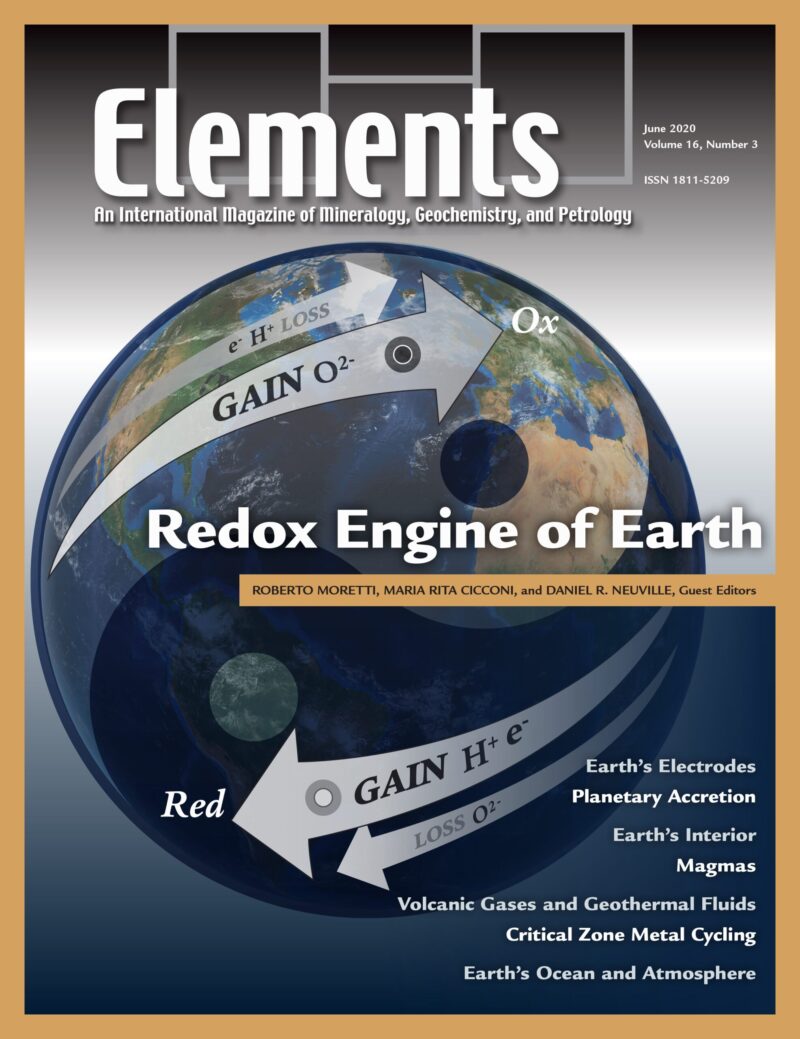-
Organic Biomarkers, April 2022, Vol. 18, No. 2
$20.00Biomarkers are molecular fossils that are preserved in a wide range of environmental archives (e.g.
-
Halogens: From Planetary Surfaces To Interiors, February 2022, Vol. 18, No. 1
$20.00The halogen-group elements (F, Cl, Br, and I) are common in the terrestrial inventory, though often present in trace amounts in many Earth and planetary materials. The halogens play a key role in a variety of geologic environments and processes, from mineralization to their influence on the composition of Earth’s atmosphere when released as oceanic, volcanogenic, and anthropogenic emissions.
-
Heavy Stable Isotopes: From Crystals To Planets, December 2021, Vol. 17, No. 6
$20.00Since their discovery in 1913, stable isotopes have become formidable tracers of physicochemical processes at all scales. Steady advances in mass spectrometry have allowed isotopic inquiries to move from the so-called “traditional” systems (i.
-
Carbonatites, October 2021, Vol. 17, No. 5
$20.00Carbonatites are rare, but important, igneous rocks in the Earth’s crust. They are composed dominantly of the Ca, Mg and Fe carbonates, along with many other minor and trace components.
-
Geoscience Beyond The Solar System, August 2021, Vol. 17, No. 4
$20.00A revolution in astronomical observation has expanded the horizon of geological processes out from the handful of rocky and icy bodies in our solar system to the now thousands of planets detected around other stars (“exoplanets”). A major result from this burgeoning field is that rocky planets are the most abundant.
-
Exploring Earth And Planetary Materials With Neutrons, June 2021, Vol. 17, No. 3
$20.00For over half a century, the structural details and the dynamics of atomic arrangements in materials have been determined using neutron-based scattering and absorption measurements. Neutron scattering experiments have contributed valuable information on geological materials and how these interact with fluids.
-
Speleothems, April 2021, Vol. 17, No. 2
$20.00Growing slowly drip by drip through the millennia, stalagmites, stalactites, and flowstone—collectively known as speleothems—are some of the most fantastic mineral features in nature. Speleothems are also critical archives of past environments, and their study incorporates expertise from groundwater hydrogeology and geochemistry, atmospheric chemistry, climate science, geobiology, and even geophysics.
-
Shedding Light On The European Alps, February 2021, Vol. 17, No. 1
$20.00The European Alps are one of the most studied orogens in the world. Research over last 30 years is forcing us to rethink our understanding of Alpine evolution: new concepts have emerged that question long-established paradigms.
-
Hydrothermal Fluids, December 2020, Vol. 16, No. 6
$20.00Fluids are one of the principal agents of heat and mass transfer in the Earth. This thematic issue explores the physical and chemical properties of hydrothermal fluids and how they affect geologic processes.
-
Noble Gas Thermochronology, October 2020, Vol. 16, No. 5
$20.00Noble-gas thermochronology takes advantage of the time-dependent production of noble gases and the thermally activated diffusion of these gases to constrain the temperature histories of minerals found in crustal rocks. Thermochronology has become widely used to address research questions across Earth and planetary science.
-
Lithium: Less Is More, August 2020, Vol. 16, No. 4
$20.00Lithium is concentrated in Earth’s upper continental crust and is an essential constituent of 122 mineral species with the greatest mineralogical diversity found in pegmatites. Lithium occurs naturally in two isotopes, 6Li and 7Li, which are readily fractionated, thus becoming sensitive to geological and environmental processes.
-
The Redox Engine Of Earth, June 2020, Vol. 16, No. 3
$20.00The redox state is one of the master variables that drove the formation of the Earth and that now also controls life processes. From the dawn of geochemistry, a knowledge of redox states has been essential to understanding the compositional makeup of our planet and the fundamental processes that occur in any natural chemical system, from the core to the atmosphere, from magmatic systems to aquatic systems.

